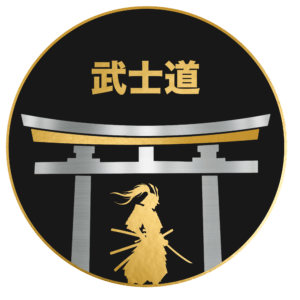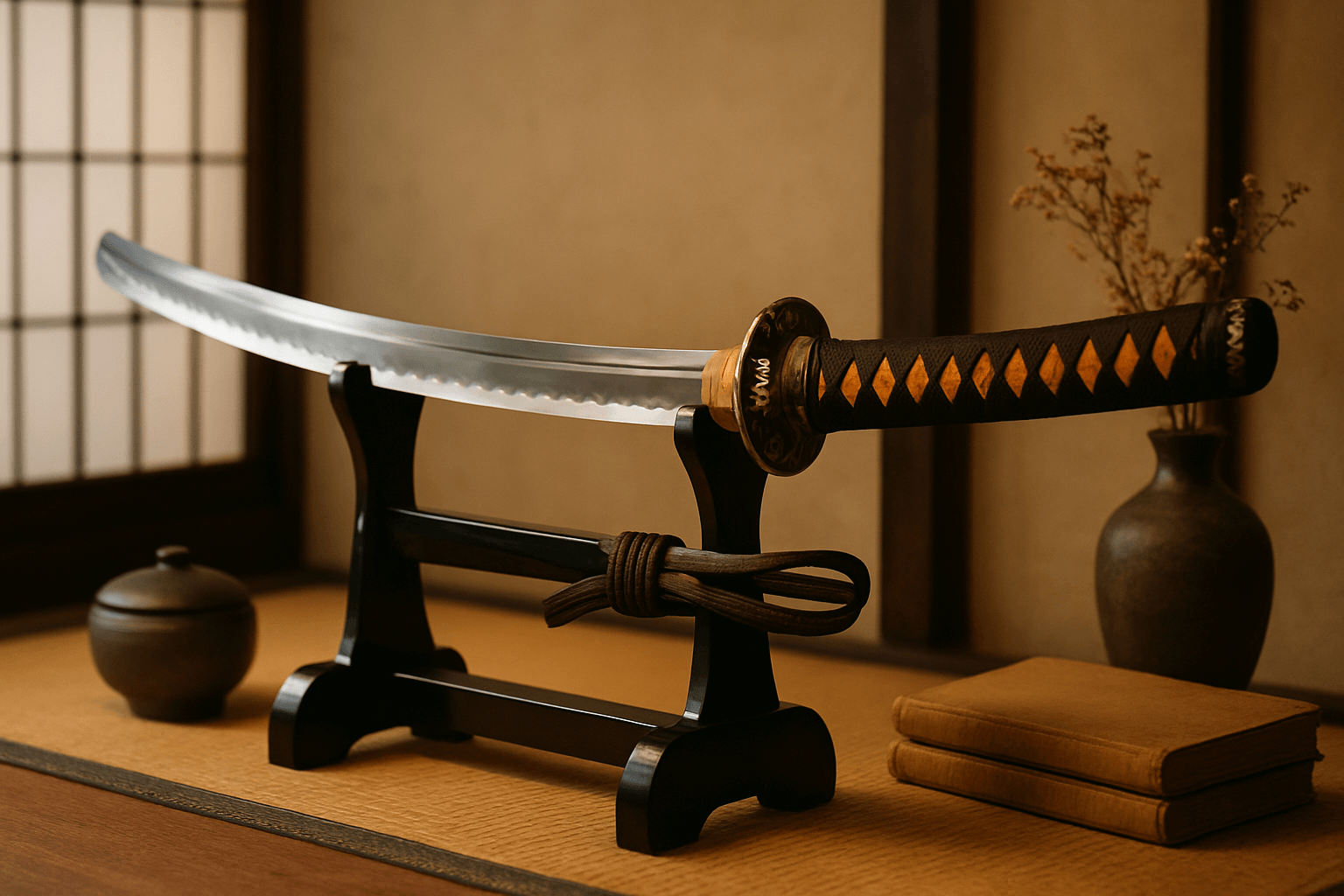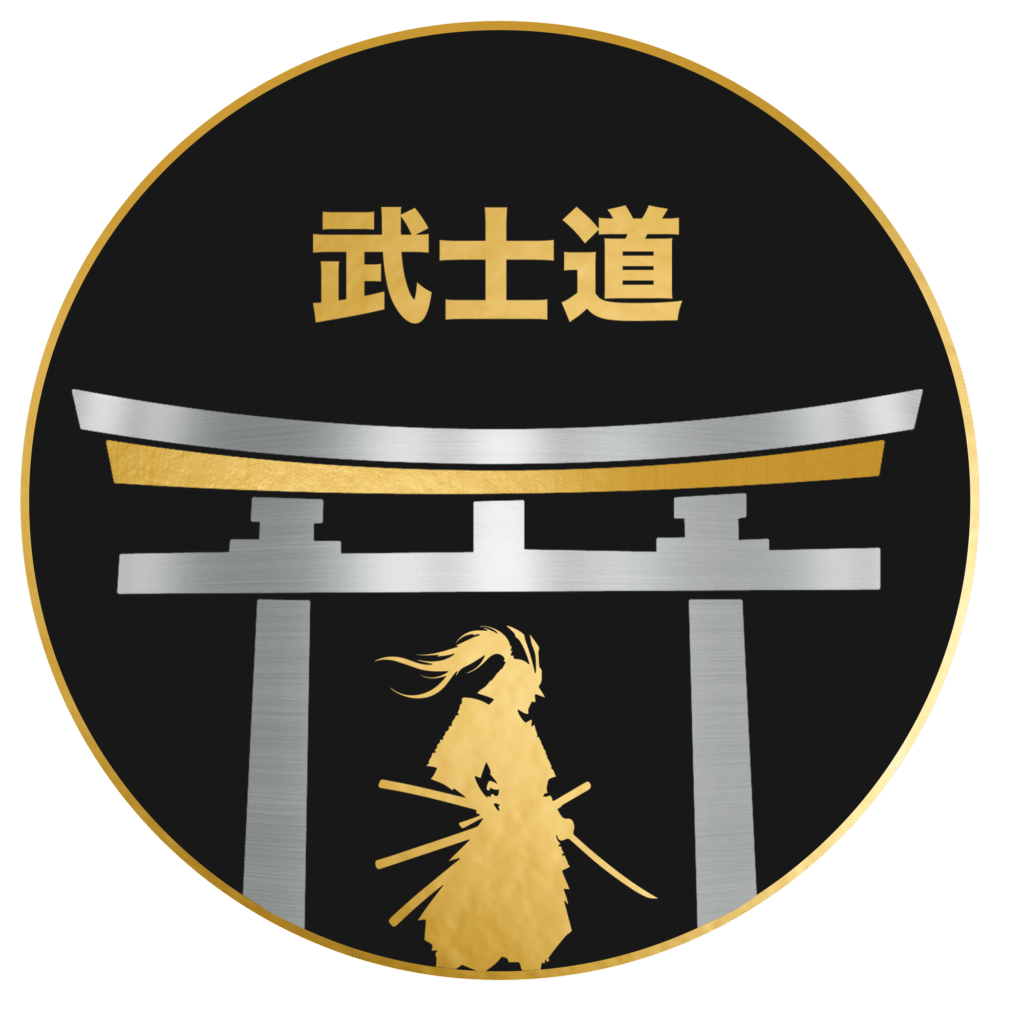Introduction: The Spirit in the Steel
The katana is more than a weapon. It is a reflection of its maker and bearer. Forged in fire, folded with care, it holds the weight of discipline, purpose, and spirit.
Each line, curve, and balance is deliberate. The blade is sharp. The heart behind it is sharper.
This is not mass-made steel. It is a living artifact—a legacy passed from hand to hand, across centuries.
To understand the katana is to see more than its edge. It is to glimpse the philosophy within—silent, precise, and unwavering.
The Ancestral Blueprint: Honoring Tradition
Every katana begins with a story—one shaped by centuries of skill, honor, and discipline. The blades in our collection do not just reflect this heritage; they carry it forward.
Traditional forging methods are at the heart of each piece. Tamahagane steel is smelted over days in clay furnaces, then folded and hammered repeatedly to purify and strengthen. Each step requires patience. Each movement, precision.
The masters who came before left more than blades behind; they passed down rhythms, rituals, and standards. These are not altered for convenience but are upheld to preserve the soul of the sword.
From the shaping of the blade to the wrapping of the tsuka, every detail honors this legacy. The quiet tension of tradition lives in the grain of the steel and the balance in the hand.
To carry one of these swords is to walk in the footsteps of generations. The path is clear. The craft remains true.
Raw Materials: Choosing with Purpose
Every element of a katana begins with the raw materials. Each is selected for a reason.
Steel forms the heart of the blade. High-carbon tamahagane or modern tool steels provide the right mix of hardness and flexibility. They hold a keen edge, resist breakage, and respond well to shaping and tempering.
The core of the handle, or tsuka, is carefully chosen hardwood—light yet strong, capable of absorbing shock without splintering. Magnolia and honoki are favored for their balance and feel.
The tsuka is wrapped in genuine rayskin for lasting grip and wear resistance, overlaid with tightly wound cotton or silk ito. These fibers endure training and combat, staying firm and resilient.
The tsuba, or guard, is typically iron or steel—minimal and functional, offering protection without distraction. Each choice reflects restraint.
No part is decorative alone. Every material serves the sword’s purpose, working together in function, balance, and spirit.
The Forge: Where Fire Meets Form
In the forge, raw steel becomes a katana. This is where transformation begins.
The process starts with tamahagane, a high-carbon steel smelted from iron sand. The smith examines each shard, selecting the right balance of hardness and resilience. There is no randomness—only skillful judgment.
The steel is stacked, wrapped in paper, coated with clay, and fired. As it glows, the smith hammers and folds it. Each fold is not for spectacle—it welds, refines, and purifies. Impurities vanish and strength is built, layer by layer.
The core and jacket—two different steels—are forged together. The heart is softer, the skin harder. This unity of contrasts imparts the renowned strength and flexibility of the blade. Fire, hammer, and breath move in rhythm; patience tempers heat, precision shapes form.
When the rough blade finally takes form, the hammering ceases. But the metal remembers—the strikes, the heat, the discipline.
In the forge, the katana is not just made. It is born.
Polishing and Tempering: Balance Revealed
As the katana nears completion, its true character must be revealed.
Polishing is not pursued for shine, but for truth. Each careful stroke of the polisher removes a veil, unveiling the layers of steel and the harmony within. The blade’s story, once hidden, is brought to light.
A master polisher moves slowly, guided by the blade’s nature. Stones of varying grit are used to refine the surface. The hamon—the temper line—emerges like drifting smoke, evidence of the smith’s vision and technique.
Tempering is a final act of balance. It secures strength within grace, hardening the edge and preserving resilience in the spine. Heat is applied with precision; timing is exact.
Together, polishing and tempering are acts of deep respect—for the blade, for the wielder, and for centuries of tradition. The result is more than a weapon: it is a final form, sharp, composed, and full of purpose.
Fittings and Mounting: Harmony in Details
Every detail of the katana’s fittings is meaningful and precise. The tsuba is more than just a handguard—it balances the blade, anchors the grip, and expresses the spirit of both smith and swordsman. Shapes may be round or square, simple or open, but every design must feel natural and unforced.
Menuki, the small ornaments beneath the handle wrap, provide both grip and significance. They often tell stories of myth, lineage, or season—but their practical function is never neglected. Placement and weight are carefully considered, felt by the hands though rarely seen by the eyes.
The tsuka-ito, or handle wrap, binds everything together. Whether cotton, silk, or leather, it must be tight, aligned, and strong—a perfectly formed diamond pattern is the mark of discipline, while a slip betrays carelessness.
Even the smallest piece—the mekugi pin of bamboo securing blade to handle—is shaped and set by hand, proving that no element is trivial.
When blade and fittings unite, there is no excess. No superficial shine. Only harmony: form born from function, beauty born from restraint.
Inspection and Testing: Proof of Integrity
Every katana must earn its place. Inspection is its final trial—examined in silence, tested with reverence.
Masters assess the balance first. The sword must move as an effortless extension of the body, neither too light nor too heavy. It should respond, not resist.
Resilience comes next. The blade faces stress, flexing and recovering without wavering or breaking. Its endurance is measured, not presumed.
The edge is then tested. A true katana cuts cleanly—there is no hesitation. Straw targets, bamboo, rolled tatami—each test exposes the honesty of the blade.
Judgment is not hurried. Eyes, hands, and ears all participate in the examination. If any flaw is uncovered, the blade returns for correction or is respectfully retired.
Only those katanas that withstand every test without doubt are deemed worthy. In the quiet of inspection, true craftsmanship reveals itself.
Showroom Finish: Honoring the Journey
The katana now rests in its stand—its edge gleams, its form balanced, quiet, and precise. Yet what you see is only surface.
This blade carries hours of heat and hammer, choices made in silence, and discipline in every stroke. This is not a product, but a path forged with devotion.
From raw steel to polished edge, every step was purposeful. Each imperfection confronted. Each tradition respected. The final finish is not simply for the eye, but for the spirit.
To behold this katana is to witness a journey—of hand, of will, of honor. It does not ask for admiration, only understanding.





